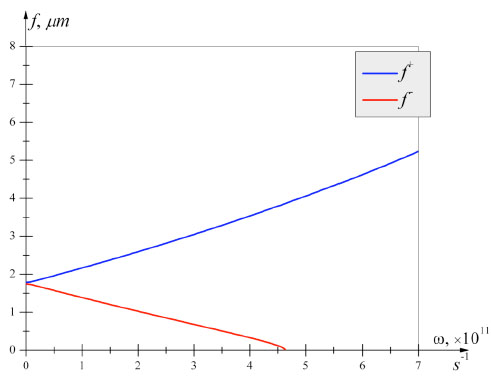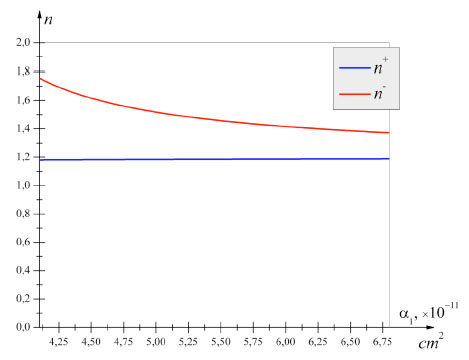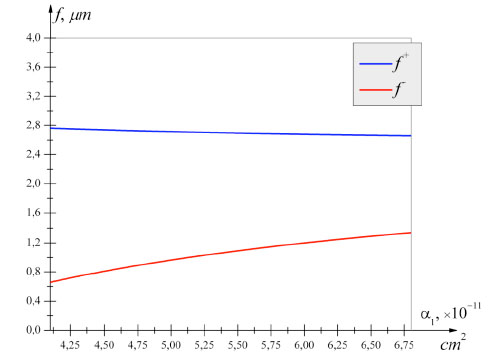- Home
- About Journals
-
Information for Authors/ReviewersEditorial Policies
Publication Fee
Publication Cycle - Process Flowchart
Online Manuscript Submission and Tracking System
Publishing Ethics and Rectitude
Authorship
Author Benefits
Reviewer Guidelines
Guest Editor Guidelines
Peer Review Workflow
Quick Track Option
Copyediting Services
Bentham Open Membership
Bentham Open Advisory Board
Archiving Policies
Fabricating and Stating False Information
Post Publication Discussions and Corrections
Editorial Management
Advertise With Us
Funding Agencies
Rate List
Kudos
General FAQs
Special Fee Waivers and Discounts
- Contact
- Help
- About Us
- Search

The Open Condensed Matter Physics Journal
(Discontinued)
ISSN: 1874-1924 ― Volume 4, 2013
Refraction of Spin Waves by Bifocal Surface Ferromagnetic Lens in External Magnetic Field Directed Along the Hard Axis
S.A. Reshetnyak , A.S. Berezhinskiy*
Abstract
Behavior of spin wave propagation in ferromagnetic medium with non-uniform distribution of magnetic parameters is studied. In particular, the influence of external magnetic field, spin-wave frequency and exchange parameter on the behavior of surface spin wave propagate through inhomogeneity made in the form of lens (lens is biaxial ferromagnet placed into uniaxial ferromagnetic medium. Ferromagnets are in the homogeneous magnetic field directed along the hard axis of biaxial ferromagnet) is studied.
Article Information
Identifiers and Pagination:
Year: 2011Volume: 4
First Page: 4
Last Page: 7
Publisher Id: TOCMPJ-4-4
DOI: 10.2174/1874186X01104010004
Article History:
Received Date: 15/8/2011Revision Received Date: 7/10/2011
Acceptance Date: 8/10/2011
Electronic publication date: 29/11/2011
Collection year: 2011
open-access license: This is an open access article licensed under the terms of the Creative Commons Attribution Non-Commercial License (http: //creativecommons.org/licenses/by-nc/3.0/ which permits unrestricted, non-commercial use, distribution and reproduction in any medium, provided the work is properly cited.
* Address correspondence to this author at the National Technical University of Ukraine “Kyiv Polytechnic Institute”, 03056, Kiev, Ukraine; Tel: +380976036806; E-mail: berejinskiy@gmail.com
| Open Peer Review Details | |||
|---|---|---|---|
| Manuscript submitted on 15-8-2011 |
Original Manuscript | Refraction of Spin Waves by Bifocal Surface Ferromagnetic Lens in External Magnetic Field Directed Along the Hard Axis | |
1. INTRODUCTION
The paper is devoted to application of geometrical optics formalism [1] to the description of behavior of spin waves propagating in a ferromagnetic medium with non-uniform distribution of magnetic parameters. Use of this approach enables to obtain a necessary veering of propagation of spin waves (in particular, a focusing) with the help of artificial inhomogeneities of medium’s magnetic parameters of the given configuration, and also by change of value of an external magnetic field.
In the papers [2, 3] refractive index of a spin beam has been defined, and its behavior was explored on a boundary of two homogeneous ferromagnetic media with different parameters of exchange interaction and biaxial magnetic anisotropy. In the present paper, bifocal spin-wave lens is proposed to be constructed on the base of inclusion of biaxial ferromagnetic part inside a uniaxial one. We have calculated the dependencies of the refraction indexes and corresponding focal distances on the wave frequency, value of external permanent magnetic field and magnetic properties of medium. It is shown that the opportunity to change these “optical” parameters in a wide region of values by only change in the external magnetic field while keeping constant the frequency and magnetic parameters of structure.
2. SPIN WAVE SPECTRUM
Let's consider an unbounded ferromagnetic medium consisting of two half-infinite homogeneous parts. The first part is ferromagnet having uniaxial anisotropy which has a value of saturation magnetization M01, value of parameter of exchange interaction α1, value of uniaxial magnetic anisotropy β1 and value of spin fixing parameter L1. The second part is biaxial ferromagnet having values of corresponding parameters M02, α2, β2, L2 and rhombic magnetic anisotropy ρ2. These parts contact along a plane xOz. The easy axis of such structure is directed along axis Oz. The hard axis of biaxial ferromagnet and external magnetic field is directed along axis Oy. Also, plain z = 0 separates the given structure from vacuum.
The energy density of such magnetic structure in exchange mode looks like [4]:
whereΘ(x) is the step function; Mj = M0jmj, mj are unit vectors in the direction of magnetization, j=1,2; A is the parameter that characterizes exchange interaction between half-spaces at y=0. Note that the case A=0 is equivalent to the absence of a coupling between layers through an interface, and A→∞ corresponds to an ideal (in a coupling sense) boundary [3].
Using methods similar to those that were used in papers [2, 5] one can find expression for spin wave spectrum in the uniaxial medium:
Analogically, expression for spin wave spectrum in the second medium is given by
where3. APPROACH OF GEOMETRICAL OPTICS
Following from Eq. (4) and Eq. (5),
If a spin wave wavelength λ satisfies the condition of geometrical optics λ << a, where a is the characteristic size of an inhomogeneity, then an analogy of classic Hamilton-Jacoby equation can be used [2, 5]:
whereCritical angle of complete reflection is given by
4. ESTIMATIONS FOR THE PARAMETERS OF SPIN WAVE LENSES
The complex reflection amplitude in interface is given by [2]
where γ = M02/M01.Estimate material’s parameters when a lens is thin and incident angle is small. Obviously, we have to provide a necessary lens transparency. An intensity of reflected wave is defined by the square of reflection amplitude module and, according to Eq. (9), is given by |R|2 ≈ [(α1 - α2γ2n)/(α1 + α2-γ2n)]2 (for small incident angles and A→∞). Demanding a conformity to the condition |R|2 < η, where η is a necessary smallness of reflection coefficient, we obtain a limitation on n and, therefore, on α, β, ρ, ω, L, M0 and H0:
In particular, at α1 = α2, M01 = M02, L1 = L2, reflection coefficient is less than 10%, if 0.52<n<.92.
To satisfy the condition of geometrical optics λ << a, a thickness of lens or mirror is restricted by
As it is seen from (9), parameters for lens can be easily provided for wide spectrum of magnetic materials [6]. In particular, the condition (11) for thin lens gives permissible values a > 10-4 ÷ 10-6 cm.
Focal length of thin lens is given by:
where R1, R2 – radiuses of curvature of lens surfaces. At R1 = -R2 = 1 µm, lens thickness a = 0,1 µm and refraction index n = 1,8, focal length is f ≈ 0,6 µm.DISCUSSION OF RESULTS
As it can be seen from Eq. (7) it is possible to observe effect of birefringence of surface spin wave. Effect of birefringence can also be observed on boundary of two biaxial ferromagnets in magnetic field directed along the easy axis (as it is shown in paper [2]) but only if the value of α2L22 is relatively large. In this case, effect of birefringence can be observed even for (relatively) small values of α2L22, but only if the values of magnetic anisotropies are large enough.
The Fig. (1 ) shows the dependencies of refraction indexes of both branches of spin wave n+ and n- on value of a spin wave frequency. We see different frequency dependencies for n+ and n-, so we can obtain a wide diapason of their relative values. It is worth noting that “negative” branch of spin wave exists only for particular range of values of spin wave frequency. As for characteristics of media that are used for Fig. (1
) shows the dependencies of refraction indexes of both branches of spin wave n+ and n- on value of a spin wave frequency. We see different frequency dependencies for n+ and n-, so we can obtain a wide diapason of their relative values. It is worth noting that “negative” branch of spin wave exists only for particular range of values of spin wave frequency. As for characteristics of media that are used for Fig. (1 ), point ω = 6.13×1011 s-1 represents beginning of forbidden zone for “negative” branch.
), point ω = 6.13×1011 s-1 represents beginning of forbidden zone for “negative” branch.
The Fig. (2 ) shows the dependencies of refraction indexes of both branches of spin wave n+ and n- on value of external homogeneous magnetic field. We see different frequency dependencies for n+ and n-, so we can obtain a wide diapason of this relative values.
) shows the dependencies of refraction indexes of both branches of spin wave n+ and n- on value of external homogeneous magnetic field. We see different frequency dependencies for n+ and n-, so we can obtain a wide diapason of this relative values.
The Fig. (3 ) shows dependencies of focal distances f + and f – on a spin wave frequency.
) shows dependencies of focal distances f + and f – on a spin wave frequency.
The Fig. (4 ) shows the dependencies of focal distances of both branches of spin wave on value of external homogeneous magnetic field.
) shows the dependencies of focal distances of both branches of spin wave on value of external homogeneous magnetic field.
The Fig. (5 ) shows the dependencies of refraction indexes of both branches of spin wave n+ and n- on value of a parameter of exchange interaction (.
) shows the dependencies of refraction indexes of both branches of spin wave n+ and n- on value of a parameter of exchange interaction (.
The Fig. (6 ) shows dependencies of focal distances f + and f – on value of a parameter of exchange interaction (.
) shows dependencies of focal distances f + and f – on value of a parameter of exchange interaction (.
Thus, we can see several ways to change the “optical” parameters of spin-wave lens, in particular, the opportunity to change them in a wide range of values by only changing the external magnetic field while keeping constant the frequency and magnetic parameters of structure. This fact allows one to use the results of this research in applications of spin-wave electronics.






